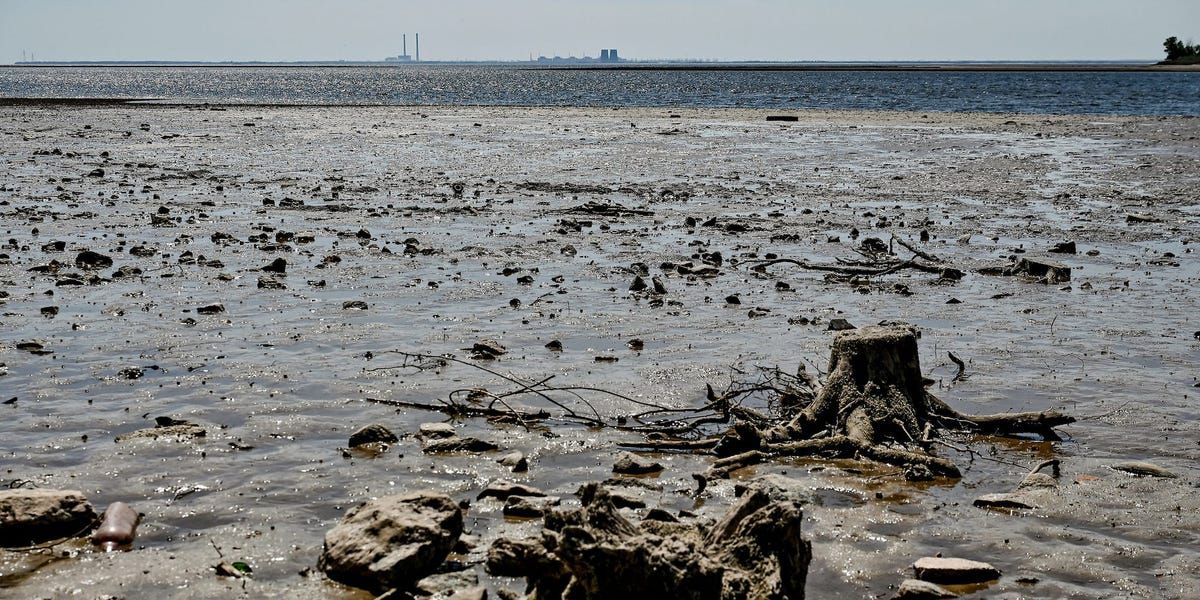Draining Reservoir From Ukraine's Destroyed Dam Is Revealing World War II Weapons
The draining reservoir is revealing weapons that date back to World War II.
The lurking dangers are also a reminder of the heavy fighting Ukraine saw in World War II.
Explosive techs are destroying mines and other weapons found. Authorities ordered civilians to stay away.
Top editors give you the stories you want — delivered right to your inbox each weekday. Loading Something is loading. Thanks for signing up! Access your favorite topics in a personalized feed while you're on the go. download the app Email address By clicking ‘Sign up’, you agree to receive marketing emails from Insider as well as other partner offers and accept our Terms of Service and Privacy Policy
As the waters of the vast Kakhovka reservoir recede, the emerging mud flats are showing scars from Ukraine's wars.
The muddy banks left after the destruction of the Kakhovka dam have yielded remnants of modern air-defense missiles of the kind that Russia and Ukraine fire at each other's aircraft and much older weapons that date back to World War II, when Soviet and Nazi forces clashed across Ukraine.
"Ammunition, in particular, even from the time of the Second World War, is found in the areas of the Kakhovsky Reservoir," Ukraine's Ministry of Internal Affairs announced Sunday as it ordered civilians to stay out of the receding reservoir.
"The water area of the reservoir is contaminated with ammunition. On June 10, explosives technicians carried out 5 controlled explosions."
Oleksandr Chechko, the head of the Ukrainian demining team, was quoted by Reuters saying, "We often recover remnants of S-300 rockets, remnants of Smerch rockets, and after the water (level) fell we are finding munitions from World War Two."
S-300s are Russian-made surface-to-air missiles, and Smerch rockets are heavy rockets fired from mobile launchers.
The older dangers lurking in the area are a reminder of the heavy fighting Ukraine saw in World War II. Determined to regain its former territory after it fell to the Germans, the Soviets drove back the Nazi Wehrmacht in the nearly four-month Battle of the Dneiper with a force of over 2.5 million Red Army troops that suffered massive loses.
Some social media users have shared striking, but unverified, videos and images of skulls found in mud. This area is made dangerous by unexploded ordnance and Russian shelling, both of which are complicating any efforts by officials and journalists to verify them.
The Guardian's Julian Borger reports that the bodies could be those of German soldiers who were left to rot after the 1943 battle.
Source: Business Insider


